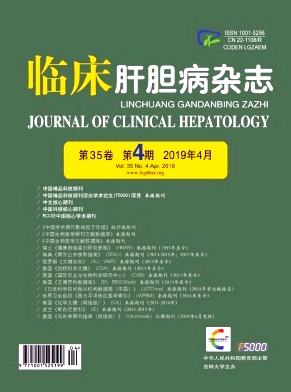|
[1]SUN P, LU YX, CHENG D, et al.Monocyte Chemoattractant protein-induced protein 1 targets hypoxia-inducible factor1αto protect against hepatic ischemia/reperfusion injury[J].Hepatology, 2018, 68 (6) :2359-2375.
|
|
[2]FRATTE S, GENDRAULT JL, STEFFAN AM, et al.Comparative ultrastructural study of rat livers preserved in Euro-Collins or University of Wisconsin solution[J].Hepatology, 1991, 13 (6) :1173-1180.
|
|
[3]DAI HB, XU MM, LV J, et al.Mild hypothermia combined with hydrogen sulfide treatment during resuscitation reduces hippocampal neuron apoptosis via NR2A, NR2B, and PI3K-Akt signaling in a rat model of cerebral ischemia-reperfusion injury[J].Mol Neurobiol, 2016, 53 (7) :4865-4873.
|
|
[4]CHENG BC, HUANG HS, CHAO CM, et al.Hypothermia may attenuate ischemia/reperfusion-induced cardiomyocyte death by reducing autophagy[J].Int J Cardiol, 2013, 168 (3) :2064-2069.
|
|
[5]TSUCHIYA D, HONG S, SUH SW, et al.Mild hypothermia reduces zinc translocation, neuronal cell death, and mortality after transient global ischemia in mice[J].J Cereb Blood Flow Metab, 2002, 22 (10) :1231-1238.
|
|
[6]SHRIVASTAVA S, JEENGAR MK, REDDY VS, et al.Anticancer effect of celastrol on human triple negative breast cancer:Possible involvement of oxidative stress, mitochondrial dysfunction, apoptosis and PI3K/Akt pathways[J].Exp Mol Pathol, 2015, 98 (3) :313-327.
|
|
[7]WANG XM, YAO M, LIU SX, et al.Interplay between the Notch and PI3K/Akt pathways in high glucose-induced podocyte apoptosis[J].Am J Physiol Renal Physiol, 2014, 306 (2) :F205-F213.
|
|
[8]CHEN Y, LIU G, HE F, et al.MicroRNA 375 modulates hyperglycemia-induced enteric glial cell apoptosis and diabetes-induced gastrointestinal dysfunction by targeting Pdk1 and repressing PI3K/Akt pathway[J].Sci Rep, 2018, 8 (1) :12681.
|
|
[9]KOHLI V, SELZNER M, MADDEN JF, et al.Endothelial cell and hepatocyte deaths occur by apoptosis after ischemiareperfusion injury in the rat liver[J].Transplantation, 1999, 67 (8) :1099-1105.
|
|
[10]GRANGER DN, KVIETYS PR.Reperfusion injury and reactive oxygen species:The evolution of a concept[J].Redox Biol, 2015, 6:524-551.
|
|
[11]PELL VR, SPIROSKI AM, MULVEY J, et al.Ischemic preconditioning protects against cardiac ischemia reperfusion injury without affecting succinate accumulation or oxidation[J].JMol Cell Cardiol, 2018, 123:88-91.
|
|
[12]YANG F, WANG S, LIU Y, et al.IRE1alpha aggravates ischemia reperfusion injury of fatty liver by regulating phenotypic transformation of kupffer cells[J].Free Radic Biol Med, 2018, 124:395-407.
|
|
[13]BEHRENDS M, HIROSE R, SERKOVA NJ, et al.Mild hypothermia reduces the inflammatory response and hepatic ischemia/reperfusion injury in rats[J].Liver Int, 2006, 26 (6) :734-741.
|
|
[14]ZHU P, ZHAO MY, LI XH, et al.Effect of low temperatures on BAX and BCL2 proteins in rats with spinal cord ischemia reperfusion injury[J].Genet Mol Res, 2015, 14 (3) :10490-[[[[[[[[10499.
|
|
[15]SANTOS EB, KOFF WJ, GREZZANA FILHO TDE J, et al.Oxidative stress evaluation of ischemia and reperfusion in kidneys under various degrees of hypothermia in rats[J].Acta Cir Bras, 2013, 28 (8) :568-573.
|
|
[16]ZHOU T, LIANG L, LIANG Y, et al.Mild hypothermia protects hippocampal neurons against oxygen-glucose deprivation/reperfusion-induced injury by improving lysosomal function and autophagic flux[J].Exp Cell Res, 2017, 358 (2) :147-160.
|
|
[17]YANG YF, ZHANG MF, TIAN QH, et al.SPAG5 interacts with CEP55 and exerts oncogenic activities via PI3K/AKT pathway in hepatocellular carcinoma[J].Mol Cancer, 2018, 17 (1) :117.
|
|
[18]WEI L, CHEN Q, GUO A, et al.Asiatic acid attenuates CCl4-induced liver fibrosis in rats by regulating the PI3K/AKT/m TOR and Bcl-2/Bax signaling pathways[J].Int Immunopharmacol, 2018, 60:1-8.
|
|
[19]YIN W, HAN J, ZHANG Z, et al.Aloperine protects mice against bleomycin-induced pulmonary fibrosis by attenuating fibroblast proliferation and differentiation[J].Sci Rep, 2018, 8 (1) :6265.
|
|
[20]LI Z, ZHAO F, CAO Y, et al.DHA attenuates hepatic ischemia reperfusion injury by inhibiting pyroptosis and activating PI3K/Akt pathway[J].Eur J Pharmacol, 2018, 835:1-10.
|
|
[21]OUYANG ZH, WANG WJ, YAN YG, et al.The PI3K/Akt pathway:A critical player in intervertebral disc degeneration[J].Oncotarget, 2017, 8 (34) :57870-57881.
|
|
[22]XIAO Q, YE QF, WANG W, et al.Mild hypothermia pretreatment protects hepatocytes against ischemia reperfusion injury via down-regulating miR-122 and IGF-1R/AKT pathway[J].Cryobiology, 2017, 75:100-105.
|














 DownLoad:
DownLoad: